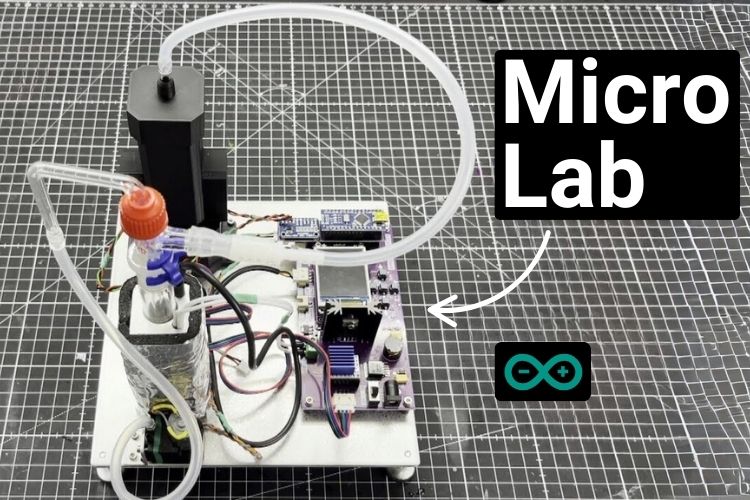
A fully automated micro-lab has been developed to measure ammonia concentration in blood and urine. The system provides frequent and cost-effective ammonia testing, addressing the limitations of standard medical coverage.
The micro-lab uses the Berthelot reaction, which detects ammonia through a color change. Instead of the traditional toxic phenol, it uses sodium salicylate as a safer alternative. The reaction produces a measurable color shift, peaking at 660 nm.
The system follows a structured process for ammonia detection. The test sample is mildly heated to release ammonia gas, preventing interference from urea. A laser diode at 660 nm emits light through the sample, and an OPT101 photodiode detects changes. An ADS1115 ADC provides precise readings. A 3D-printed magnetic stirrer with neodymium magnets, driven by a stepper motor, ensures uniform mixing.
The heating system uses a 12V, 70W cartridge heater controlled by a PID algorithm. An LM35 sensor provides ±1°C accuracy. A PWM-controlled air pump helps diffuse the sample, ensuring efficient gas extraction.
The hardware was designed in CAD and manufactured using custom PCBs and CNC machining. An Arduino Nano controls all sensors and actuators. The base plate is a sturdy 200x200 mm, 5 mm thick aluminum sheet.
Initial tests used a known ammonia concentration to verify accuracy. The system successfully detected ammonia, confirming its functionality. Further testing will refine the mathematical model for a precise correlation between transmittance and concentration.
This micro-lab offers a practical and automated solution for frequent ammonia monitoring, benefiting those with medical conditions requiring regular testing.

